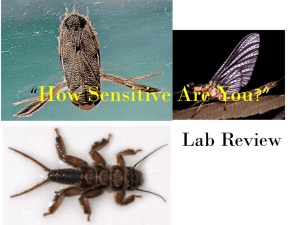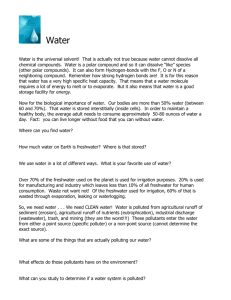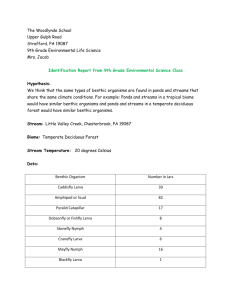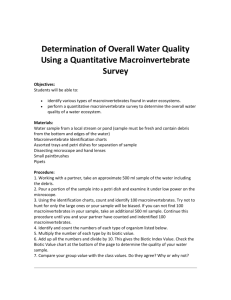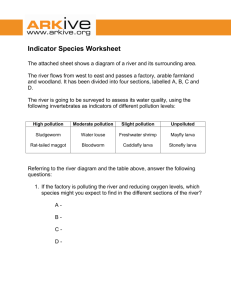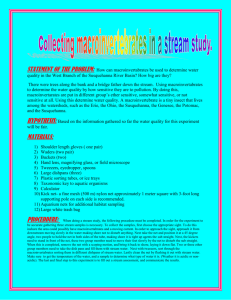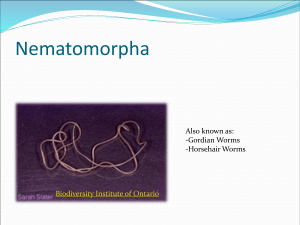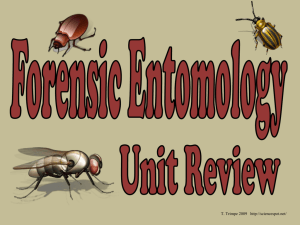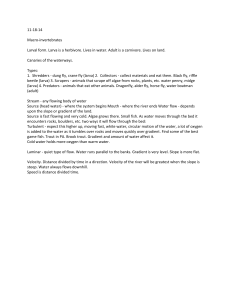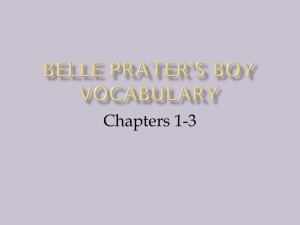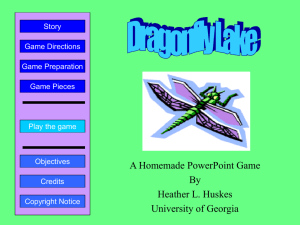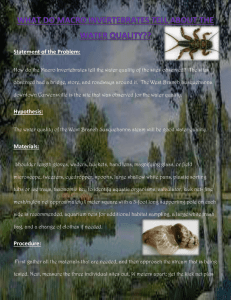Mini-beast Biodiversity Survey Sheet (B06c)
advertisement
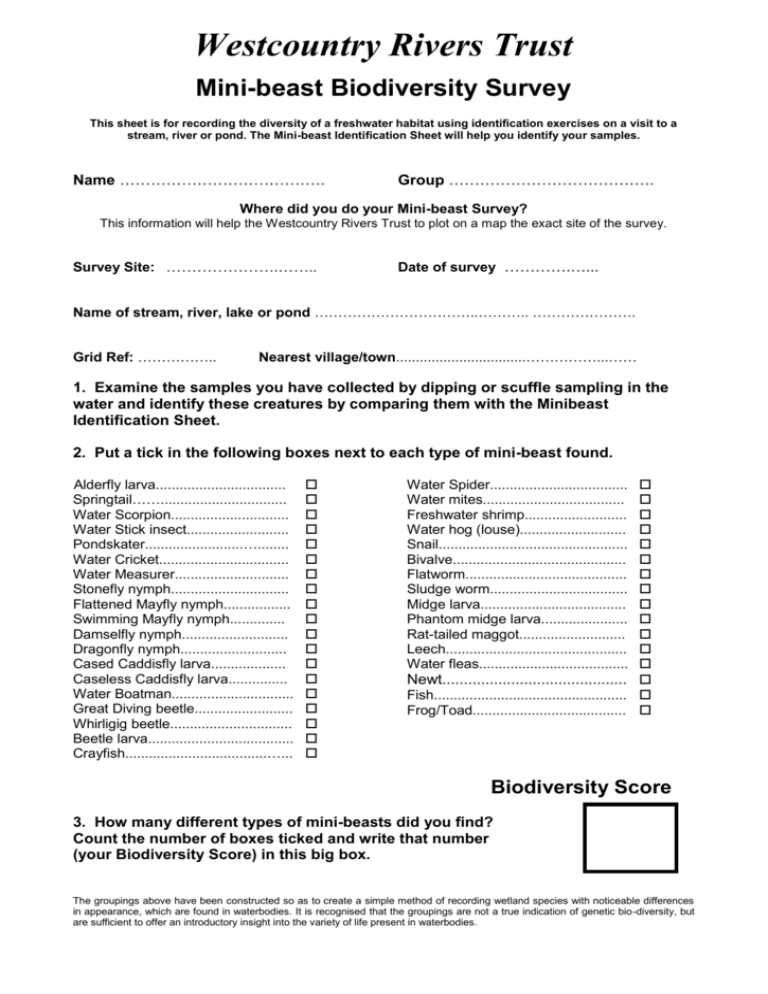
Westcountry Rivers Trust Mini-beast Biodiversity Survey This sheet is for recording the diversity of a freshwater habitat using identification exercises on a visit to a stream, river or pond. The Mini-beast Identification Sheet will help you identify your samples. Name …………………………………. Group …………………………………. Where did you do your Mini-beast Survey? This information will help the Westcountry Rivers Trust to plot on a map the exact site of the survey. Survey Site: ………………….…….. Date of survey ………….…... Name of stream, river, lake or pond ……………………………..……….. …………………. Grid Ref: …………….. Nearest village/town.................................……………...…… 1. Examine the samples you have collected by dipping or scuffle sampling in the water and identify these creatures by comparing them with the Minibeast Identification Sheet. 2. Put a tick in the following boxes next to each type of mini-beast found. Alderfly larva................................. Springtail……................................ Water Scorpion.............................. Water Stick insect.......................... Pondskater.........................…........ Water Cricket................................. Water Measurer............................. Stonefly nymph.............................. Flattened Mayfly nymph................. Swimming Mayfly nymph.............. Damselfly nymph........................... Dragonfly nymph........................... Cased Caddisfly larva................... Caseless Caddisfly larva............... Water Boatman............................... Great Diving beetle......................... Whirligig beetle............................... Beetle larva..................................... Crayfish....................................…... Newt........................................... Fish................................................. Frog/Toad....................................... Water Spider................................... Water mites.................................... Freshwater shrimp.......................... Water hog (louse)........................... Snail................................................ Bivalve............................................ Flatworm......................................... Sludge worm................................... Midge larva..................................... Phantom midge larva...................... Rat-tailed maggot........................... Leech.............................................. Water fleas...................................... Biodiversity Score 3. How many different types of mini-beasts did you find? Count the number of boxes ticked and write that number (your Biodiversity Score) in this big box. The groupings above have been constructed so as to create a simple method of recording wetland species with noticeable differences in appearance, which are found in waterbodies. It is recognised that the groupings are not a true indication of genetic bio-diversity, but are sufficient to offer an introductory insight into the variety of life present in waterbodies.
